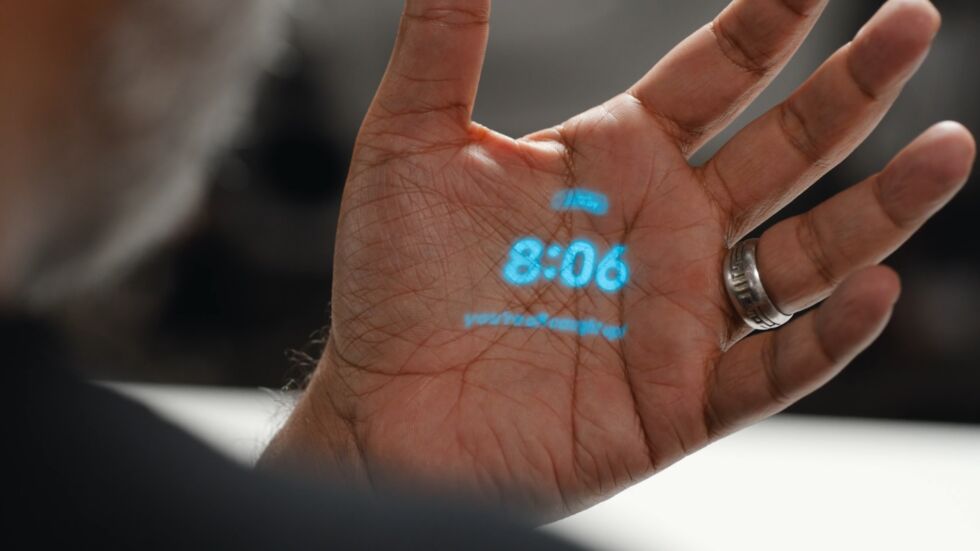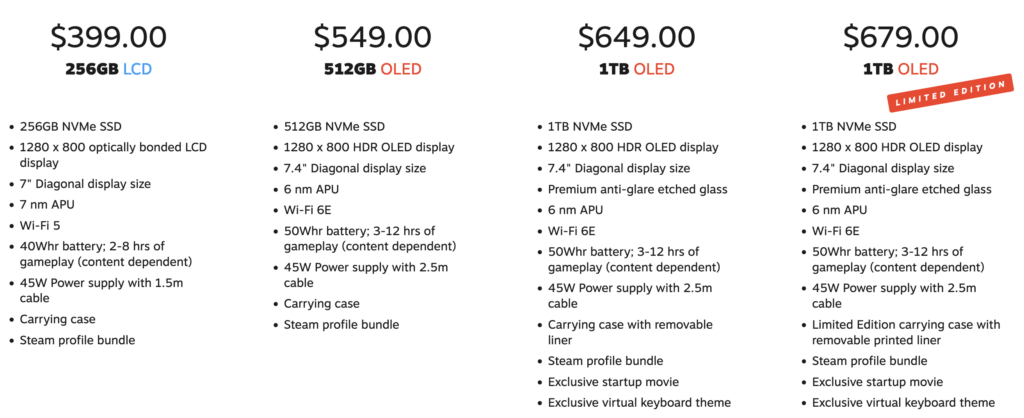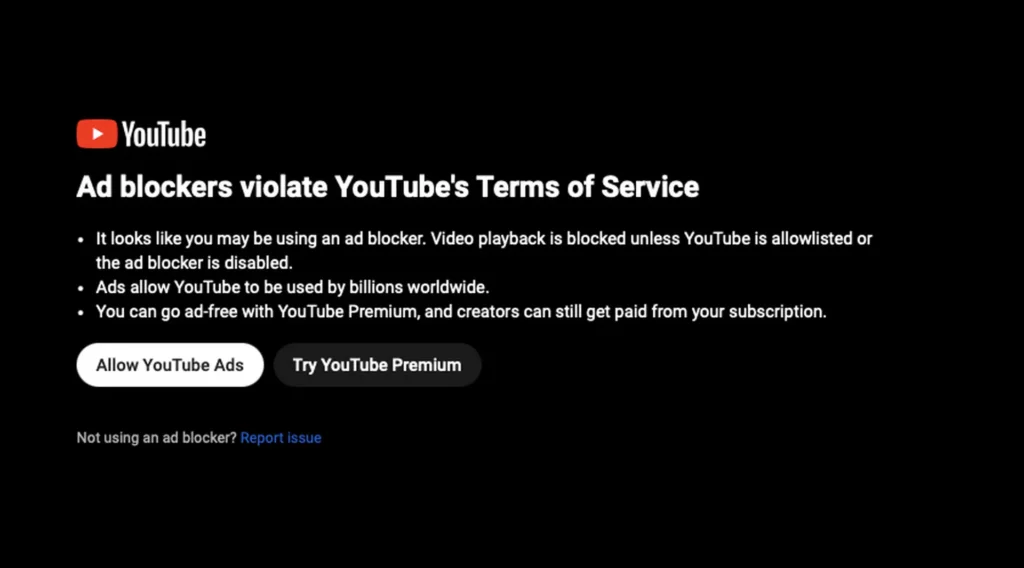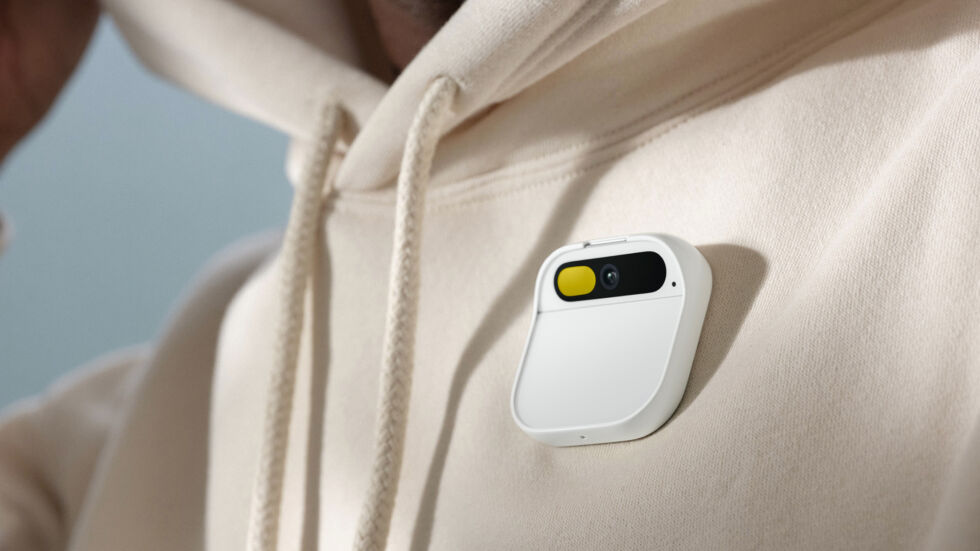All of my opinions are italicized and sources are in blue.
As reported by Ars Technica,
Not since Magic Leap has a “next-generation” hardware company been so hyped while showing so little. Everyone in the tech world has been freaking out about this new pocket protector thing that wants to “replace your smartphone.” It’s called the “Humane AI Pin.” As far as we can tell, it’s a $700 screenless voice assistant box and, like all smartphone-ish devices released in the last 10 years, it has some AI in it. It’s as if Google Glass had a baby with a pager from the 1990s.
It’s a voice assistant box, so that means it has a microphone and speaker. There’s no hot word, and it’s not always listening, so you’ll be pressing a button to speak to it, and you’ll get a response back. There’s also a camera, and because you’re expected to mount this on your clothing at chest level via a magnetic back piece, you’ll be creepily pointing a camera at everyone the whole time you’re using it. It claims to be “screenless,” but it has a pretty cool 720p laser projection system that seems to function as a fine monochrome screen that projects a smartwatch-like UI onto your hand. It shows some super basic UI elements, like a circular media player or a scrolling wall of text. A few hand gestures, like tapping your fingers together, will let you interact with it.

Despite claiming to be able to replace a smartphone, the Humane AI Pin is going back to the Dark Ages and not supporting any apps. We’ve seen so many devices live and die by their app ecosystems, and the matter-of-fact quote from the presentation was, “We don’t do apps.” You’ll be locked into whatever features and services Humane has built into the Android-based “Cosmos” OS. So if you want to play music, it needs to be from Tidal, a service with 0–2 percent market share, because that’s who the Humane people have partnered with. It’s unclear if there is any other third-party functionality other than that. Humane’s “Cosmos” page shows logos for Slack and then logos from Microsoft and Google, which could mean anything.
Not having a screen, or at least not prioritizing the laser projector screen, means you’ll be doing a lot of work to understand what the pin is trying to tell you. There are two different lights on the device—a front one and a top one—that each blinks five or six different colors that all communicate some kind of state, so that’s 11 color/location combinations to keep track of. Without a touchscreen, input is also an esoteric affair, with seven tap or swipe gestures you can perform on the front of the pin for things like answering a phone call and changing media tracks. Rather than just seeing and tapping things on a screen, the interaction guide reads like you’ll be learning a second language. As much as it looks like a pager, a one-line text output on top of the device would have gone a long way for status communication.
Humane’s website recaps some of the functionality in a hushed, awestruck video that seemingly is unaware of the Google Assistant, Siri, Alexa, Cortana, Bixby, Nuance, and every other voice thing that has existed for years. Some of the response times shown in the official video are not great, with the pin taking several seconds to come back with a reply. At one point the presenters ask, “When is the next eclipse, and where is the best place to see it?” The presenters, while waiting for a response, then have enough time to explain what’s going to happen and say, “This is an AI browsing the web, grabbing knowledge from all over the Internet.” Then the response finally comes back. The Google Assistant answers the same question in less time, with a helpful map from nasa.gov showing visible eclipse locations. The video seems to always have cuts between the questions and responses, so it’s unclear how much of this is happening in real life. It also sounds like voice responses only work while you’re online.
“Online” means this thing has an always-on T-Mobile connection that costs $24 a month. That subscription is “required” by the way, so even though this can also connect to Wi-Fi, you’ll still need to pay the monthly fee. Presumably some of the money goes to Humane to pay for voice and AI compute costs. As miserable as that sounds, note that the voice assistants that aren’t charging a monthly fee are all huge money losers. When you’re not a trillion-dollar tech giant, this is the financial reality of voice and AI processing.
Grok is an AI chatbot developed by xAI that is “modeled after the Hitchhiker’s Guide to the Galaxy”.
The xAI announcement says that Grok is built on top of a language model called Grok-1 that has 33 billion parameters. The company says it developed Grok in two months, a relatively short amount of time by industry standards, and also claims that a fundamental advantage is its “real-time knowledge of the world via the X platform”.
Grok is also stated to “answer questions with a bit of wit and has a rebellious streak, so please don’t use it if you hate humor”.
Elon Musk tweeted an example of this on X.

Grok is also intended to answer “spicy questions that are rejected by most other AI systems”, like how to make cocaine.


The new Steam Deck OLED is designed to be the ultimate version of the original Steam Deck. This is not a Steam Deck 2, but rather a refresh. Valve is sticking with its plan not to produce a faster handheld for the next couple of years, just like other consoles. Valve is promising the “first handheld with HDR OLED” with a larger 7.4-inch, 90Hz, 1,000-nit screen and up to 50 percent longer battery life.
The new OLED screen is a 7.4-inch 90Hz RGB-stripe custom Samsung screen (versus 7-inch 60Hz IPS LCD) that displays 110 percent DCI-P3 color gamut (up from estimated 67 percent sRGB). Burn-in will not be an issue because the Deck is reported to use the same screen technology as the Nintendo Switch OLED, which has survived 2 years of abuse by WULFF DEN.
Unlike the Nintendo Switch OLED, the new Steam Deck will be cheaper than the previous Deck. The previous $400 starting price is for the 256GB LCD model, instead of the previous 64GB LCD model.

The jury trial between Epic Games and Google over antitrust claims about the latter’s payments system and rules began on November 6th.
The dispute began in 2020 when Epic introduced a hotfix to Fortnite that directed players to buy virtual currency V-Bucks directly, avoiding the 30% cut Google takes through its handling of all in-game transactions.
Google removed Fortnite from the Google Play store, to which Epic swiftly responded with an antitrust lawsuit. Google later countersued Epic for breach of contract.
Epic’s arguments are that Google’s requirement for developers to use the Play store’s payment system for all transactions is anti-competitive and that, while Android users can install apps without using Google’s marketplace (unlike Apple’s iOS), Google Play is so dominant that it is not financially viable or profitable to do so.
The jury trial begins, Seeking Alpha reports, with Sundar Pichai, CEO of Google parent Alphabet, and Epic CEO Tim Sweeney expected to testify.
Google’s VP of government affairs and public policy told Seeking Alpha: “[Epic’s] claims are baseless. Android enables developers to distribute through multiple app stores or directly to users through the web.”
Epic has been fighting a similar battle against Apple, with the added arguments that the closed iOS ecosystem means developers are unable to distribute apps to iPhones and iPads without going directly through the App Store.
However, in the 2021 antitrust trial between Epic and Apple, the judge ruled in Apple’s favor on nine of out ten counts. Epic’s only victory was a ruling that Apple should cease its anti-steering policies and allow developers to provide users with links to where they may make direct purchases.
Both Epic and Apple continue to appeal against the judge’s ruling, with the matter now being put to the Supreme Court, so no changes have yet been made to iOS or its payment system.
Google has previously asked the courts not to connect its own dispute against Epic with the Apple case.
Epic Games is also taking legal action against Google in the UK and Australia.
As reported by The Record,
A federal judge on Tuesday refused to bring back a class action lawsuit alleging four auto manufacturers had violated Washington state’s privacy laws by using vehicles’ on-board infotainment systems to record and intercept customers’ private text messages and mobile phone call logs.
The Seattle-based appellate judge ruled that the practice does not meet the threshold for an illegal privacy violation under state law, handing a big win to automakers Honda, Toyota, Volkswagen and General Motors, which are defendants in five related class action suits focused on the issue. One of those cases, against Ford, had been dismissed on appeal previously.
The plaintiffs in the four live cases had appealed a prior judge’s dismissal. But the appellate judge ruled Tuesday that the interception and recording of mobile phone activity did not meet the Washington Privacy Act’s standard that a plaintiff must prove that “his or her business, his or her person, or his or her reputation” has been threatened.
In an example of the issues at stake, plaintiffs in one of the five cases filed suit against Honda in 2021, arguing that beginning in at least 2014 infotainment systems in the company’s vehicles began downloading and storing a copy of all text messages on smartphones when they were connected to the system.
An Annapolis, Maryland-based company, Berla Corporation, provides the technology to some car manufacturers but does not offer it to the general public, the lawsuit said. Once messages are downloaded, Berla’s software makes it impossible for vehicle owners to access their communications and call logs but does provide law enforcement with access, the lawsuit said.
Many car manufacturers are selling car owners’ data to advertisers as a revenue boosting tactic, according to earlier reporting by Recorded Future News. Automakers are exponentially increasing the number of sensors they place in their cars every year with little regulation of the practice.

As YouTube tightens its restrictions on ad blockers, privacy advocates in the European Union are betting that government regulations can put a stop to the crackdown.
One privacy expert, Alexander Hanff, filed a complaint in October with the Irish Data Protection Commission (DPC). Hanff argues that YouTube’s ad blocker detection system is a violation of privacy — a charge Google denies — and illegal under EU law. “AdBlock detection scripts are spyware — there is no other way to describe them and as such it is not acceptable to deploy them without consent,” Hanff tells The Verge. “I consider any deployment of technology which can be used to spy on my devices is both unethical and illegal in most situations.”
The fight against ad blocker detection isn’t anything new, but YouTube’s “global effort” to stop ad blockers has renewed interest in the topic. Sites like YouTube can detect ad blockers by either downloading JavaScript code that checks whether anything on the page has changed or by detecting when the elements required to load an ad are blocked, according to The New York Times.
Hanff first reached out to the European Commission about the use of ad blocker detection tools in 2016. In response to his concerns, the commission confirmed that scripts used to detect ad blockers also fall under Article 5.3 of the ePrivacy Directive, a rule that requires websites to ask for user consent before storing or accessing information on a user’s device, such as cookies. “Article 5.3 does not limit itself to any particular type of information or technology, such as cookies,” the commission wrote at the time. “Article 5(3) would also apply to the storage by websites of scripts in users’ terminal equipment to detect if users have installed or are using ad blockers.”
It doesn’t seem like this had any meaningful impact on how websites detect ad blockers, though. The European Commission seemed to reverse its stance in a proposed reform of its privacy law in 2017, stating that website providers should be able to check whether a user is using an ad blocker without their approval.
Hanff’s most recent complaint to the commission references his earlier letter. It calls upon the DPC to take action against YouTube and stop it from using ad blocker detection tools. Hanff tells The Verge that in addition to violating Article 5.3 of the ePrivacy Directive, he believes it’s also a breach of the fundamental right to privacy under the Universal Declaration of Human Rights and other conventions. Since submitting his complaint, Hanff says the Irish DPC has already acknowledged it and that he has had a call and “a number of emails” exchanged with them.
If the European Commission finds that YouTube’s ad blocker detection system violates the EU’s ePrivacy Directive, the commission might hit the platform with a fine and force it to change the feature. It’s a bit too early to tell how the commission will respond to Hanff’s challenge, but the outcome likely won’t result in any changes to the existing system for those of us in the US.

